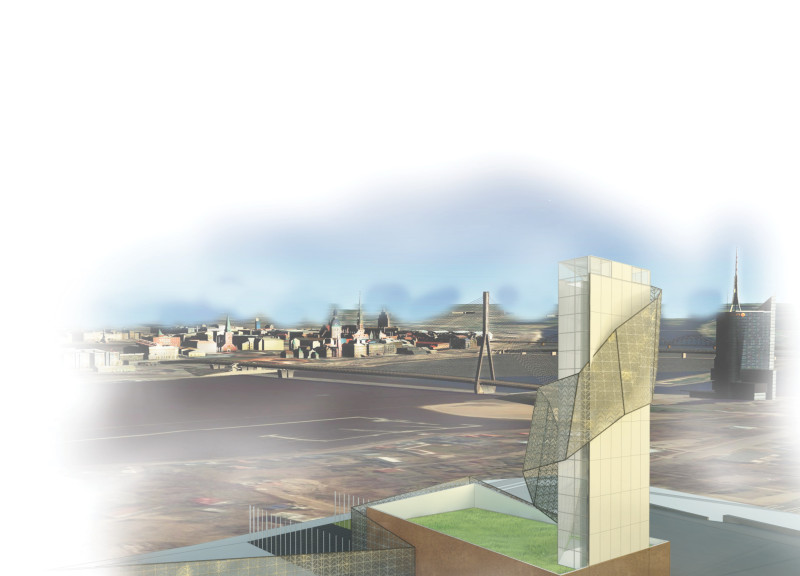5 key facts about this project
The International Exhibition Center in Riga serves as a prominent space for exhibitions, conferences, and community activities. Set in Latvia, the design reflects the cultural heritage of the nation, drawing inspiration from the Latvian calendar. This connection to time, seasons, and traditions informs the overall design concept, offering both functionality and cultural depth.
Conceptual Framework
The façade of the center features a ribbon of perforated metal that plays a vital role in its design. This skin unifies the existing buildings and new additions, making it visually coherent. The pattern on the perforated metal is inspired by symbols found in traditional Latvian textiles, such as mittens and sashes. These motifs evoke themes of protection and wellbeing, establishing a modern interpretation that honors cultural roots.
Spatial Organization
Inside, the main areas of the center include an auditorium, conference rooms, and office spaces arranged in an elevated structure. This layout allows for an inviting entry lobby with a ticket counter and coat check, creating a friendly environment for visitors. The design takes into account the needs of modern users, while remaining respectful of Latvia's cultural context. Attention to circulation and gathering spaces encourages interaction among attendees.
Vertical Integration
A notable tower rises from the main structure, contributing to Riga's skyline. The design of the tower reflects the ambitions of the center and presents a contemporary approach to architecture in Latvia. Its twisting form strengthens the visual connection to the existing building. The tower includes elevators and stairs for easy movement between levels. Near the top, there is a platform for small exhibitions, supporting community engagement and activity.
Design Detail
The roof of the elevated mass serves two main purposes: it acts as an outdoor exhibition space and a landscaped garden. This facilitates connections with the surrounding environment, providing a quiet place for visitors to relax. Additionally, a café and gallery area invite people to pause and reflect, enhancing the overall experience of the center. These elements work together to create a dynamic and inviting space for both locals and visitors alike.


























